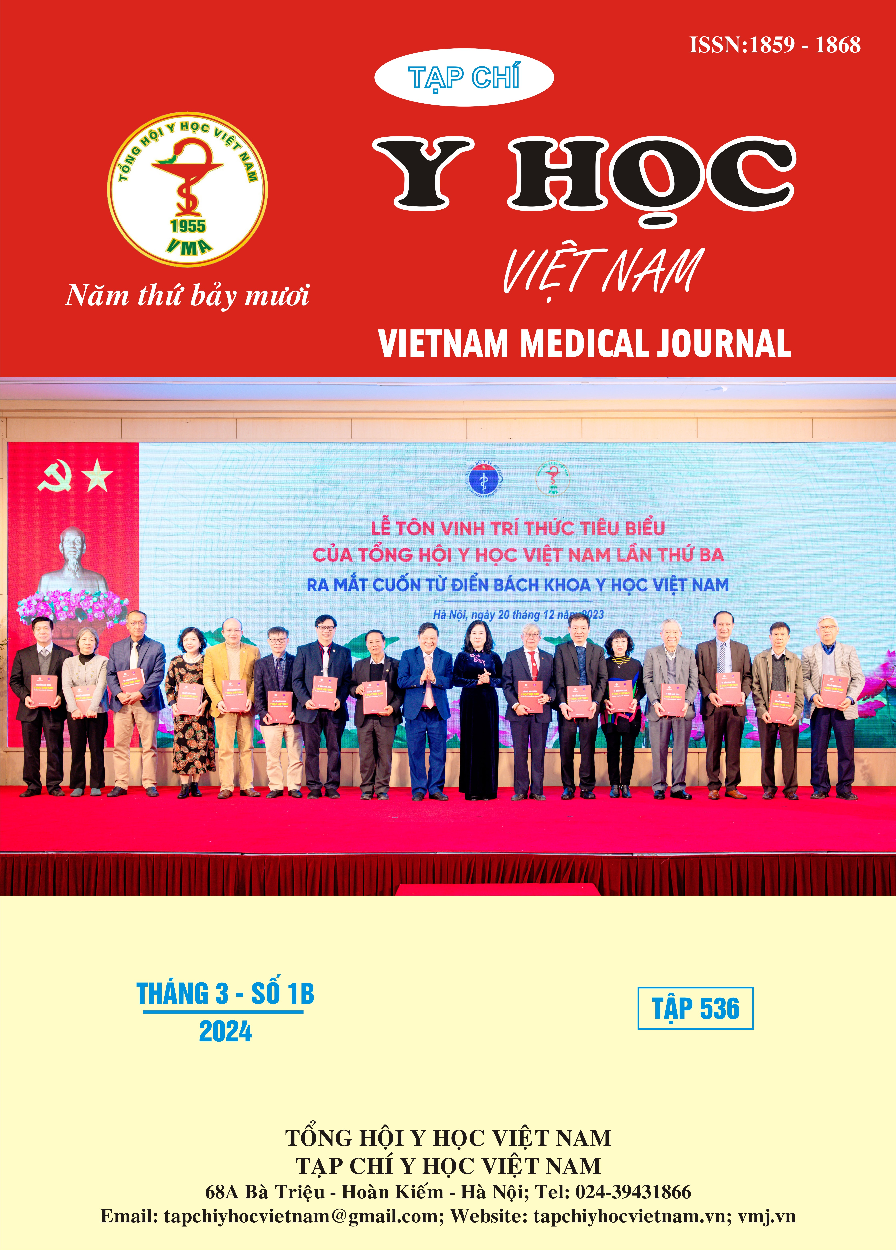COMPARISON OF CHARACTERISTICS OF PATIENTS WITH ACUTE ST-SEGMENT ELEVATION MYOCARDIAL INFARCTION WITH MULTIVESSEL CORONARY ARTERY INJURY UNDERGOING COMPLETE AND INCOMPLETE REVASCULARIZATION
Main Article Content
Abstract
Background: Patients with ST-elevation myocardial infarction (STEMI) undergoing coronary angiography with multivessel coronary artery injury face a challenging prognosis. However, the rates of complete reperfusion vary across studies, influenced by factors such as timing and regional disparities. Objectives: To compare clinical and paraclinical features among patients with STEMI and multivessel coronary artery disease treated with either complete or incomplete revascularization. Materials and methods: This cross-sectional, prospective, descriptive study with longitudinal follow-up involved 105 patients with ST-elevation acute myocardial infarction who underwent primary percutaneous coronary revascularization from April 2022 to June 2022 at the Department of Interventional Cardiology and the Department of Cardiovascular Internal Medicine, Cho Ray Hospital. Results: The average age was 64.1 ± 11.5 years, with a male/female ratio of 2.28/1. The highest prevalence of cardiovascular risk factors was dyslipidemia (88.6%) and hypertension (73.3%). Inferior myocardial infarction (42.9%) was most common, followed by anterior wall infarction (37.1%), lateral wall infarction (13.3%), and large anterior infarct (6.7%). Common complications included acute pulmonary edema (17.1%) and third-degree atrioventricular block (12.3%). The most frequent culprit coronary artery branch was LAD (45.7%), followed by RCA (41.9%), LCx (11.3%), and LMCA (0.9%). Receiving coronary intervention < 12 hours after chest pain onset accounted for 67.6%, 12 to 24 hours for 26.7%, and after 24 hours for 5.6%. The rate of patients receiving complete reperfusion was 31.4%. No significant differences were observed in clinical (age, gender, blood pressure, heart rate, time from onset to emergency intervention, cardiovascular risk factors) and paraclinical characteristics (HbA1C, Creatinine, hs-troponin I, LVEF, injury characteristics) between the complete and incomplete reperfusion groups. Conclusions: These findings suggest that while a substantial proportion of patients received incomplete reperfusion, clinical and paraclinical characteristics did not significantly differ between those with complete and incomplete revascularization. Further research is warranted to explore the impact of revascularization strategies on long-term outcomes in this patient population.
Article Details
References
2. Dziewierz A, Siudak Z, Rakowski T, et al. Impact of multivessel coronary artery disease and noninfarct-related artery revascularization on outcome of patients with ST-elevation myocardial infarction transferred for primary percutaneous coronary intervention (from the EUROTRANSFER Registry). Am J Cardiol. 2010;106(3):342-7. doi:10.1016/j.amjcard.2010.03.029
3. Engstrøm T, Kelbæk H, Helqvist S, et al. Complete revascularisation versus treatment of the culprit lesion only in patients with ST-segment elevation myocardial infarction and multivessel disease (DANAMI-3—PRIMULTI): an open-label, randomised controlled trial. Lancet. 2015; 386 (9994):665-71. doi: 10.1016/ s0140-6736 (15)60648-1
4. Gershlick AH, Khan JN, Kelly DJ, et al. Randomized trial of complete versus lesion-only revascularization in patients undergoing primary percutaneous coronary intervention for STEMI and multivessel disease: the CvLPRIT trial. J Am Coll Cardiol. 2015;65(10): 963-72. doi: 10.1016/ j.jacc.2014.12.038
5. Mehta SR, Wood DA, Storey RF, et al. Complete Revascularization with Multivessel PCI for Myocardial Infarction. N Engl J Med. 2019; 381 (15): 1411-1421. doi: 10. 1056/ NEJMoa1907775
6. Smits PC, Abdel-Wahab M, Neumann F-J, et al. Fractional Flow Reserve–Guided Multivessel Angioplasty in Myocardial Infarction. New England Journal of Medicine. 2017;376(13): 1234-1244. doi:10. 1056/ NEJMoa1701067
7. Wald DS, Morris JK, Wald NJ, et al. Randomized trial of preventive angioplasty in myocardial infarction. N Engl J Med. 2013; 369(12): 1115-23. doi:10.1056/NEJMoa1305520
8. Dauerman HL. Reasonable incomplete revascularization. Circulation. 2011;123(21):2337-40. doi: 10.1161/ circulationaha. 111.033126
9. Hannan EL, Wu C, Walford G, et al. Incomplete revascularization in the era of drug-eluting stents: impact on adverse outcomes. JACC Cardiovascular interventions. 2009;2(1):17-25. doi:10.1016/j.jcin.2008.08.021


